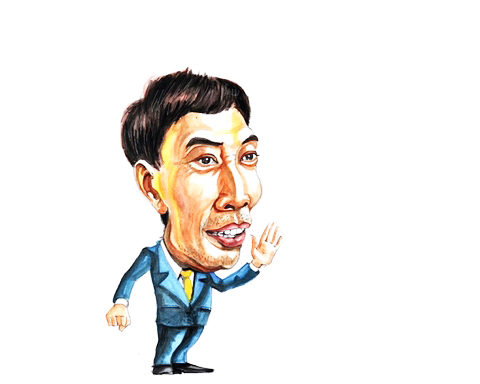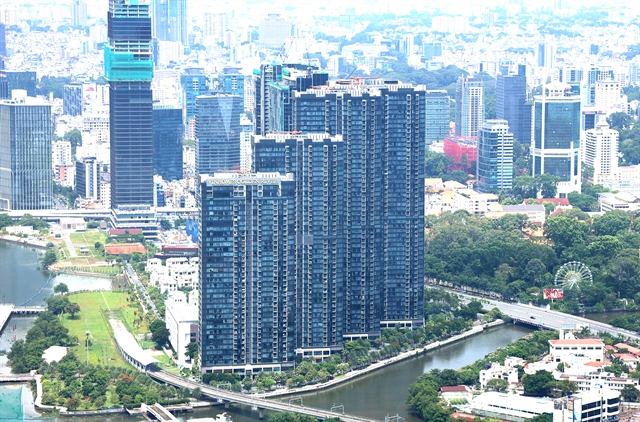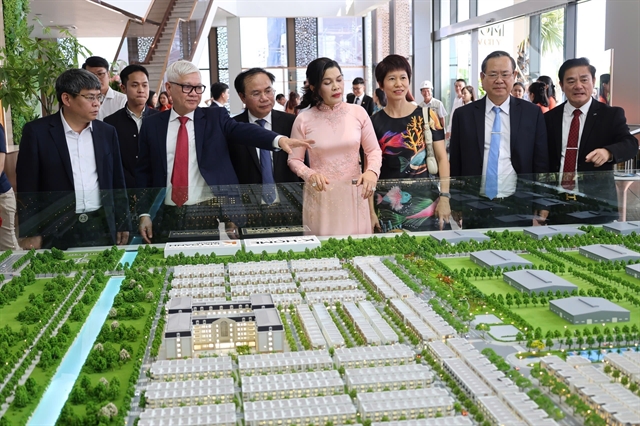Việt Nam is working to build a fair and transparent land system that supports both economic growth and the needs of its people.

*Võ Trí Thành
After one year of implementation, Việt Nam’s 2024 Land Law is under review. While it has brought significant improvements in decentralisation, transparency and land access, many challenges have emerged.
The Government and related ministries are now working on amendments, aiming to ensure that land continues to serve as a foundation for economic growth, social stability and investment.
Land is not just a development resource. It is also a matter of livelihood, housing and economic justice. Managing this resource fairly and efficiently remains a national priority but faces many challenges.
The 2024 Land Law, which came into effect in August last year, introduced major reforms intended to modernise land administration, support business activities and enhance local authority in decision-making.
Among its notable achievements, the law has clarified procedures for land allocation and lease. It allows multi-purpose land use where consistent with planning, removes the requirement for a land use certificate when applying for investment and shifts authority to change agricultural land use to provincial councils. These changes have helped improve access to land for businesses and citizens.
Another key improvement is the development of a national land database. The law requires coordination between central and local agencies to build and share digital land information. This is a critical step toward a more transparent, accountable and efficient land management system.
Despite these positive steps, the law has also revealed some shortcomings.
One of the most pressing problems is the removal of the government’s fixed land price framework. While this change aimed to reflect market values, it has led to sudden price increases in many areas. In several provinces, land prices have surged by two to 30 times, making it difficult for people to afford housing, convert land use or invest in projects.
These pricing issues have also hurt businesses, especially small- and medium-sized developers. Many have withdrawn from the market, reducing the supply of affordable housing. This, in turn, has pushed up prices in the real estate market.
Apartment prices in Hà Nội and HCM City have reached new highs, rising 3.5 to 4 times compared to 2019, with some new projects priced at over VNĐ100 million (US$3,850) per square metre.

Problems have also appeared in land auctions. Some investors raise prices just to drop out later, because starting prices are too low and deposits are small. This causes market disruption and delays in land clearance and resettlement.
There is also a mismatch between the law and the new local government structure. Since July 1, Việt Nam has officially adopted a two-tier local administration model, eliminating district-level units. However, the Land Law still includes planning rules for three tiers – national, provincial and district – creating confusion and delays.
To address these and other problems, the Government plans to revise Resolution 18, which provides the legal foundation for land law reform. The Ministry of Natural Resources and Environment is now collecting public feedback and expects to submit a revised law to the National Assembly by the end of 2025. If passed, it will take effect in 2026.
The proposed amendments include adjusting land planning procedures to match the two-tier government structure. Another proposal allows the State to reclaim land in special cases, including free trade zones, international financial centres and projects serving urgent political or diplomatic goals.
A key proposal is to reform the way land is priced. Current market-based methods are proving unreliable and difficult to implement. The ministry suggests either setting a new price table every five years or using a pricing coefficient to adjust existing values. Both approaches are intended to stabilise pricing and reduce the influence of short-term market fluctuations.
In parallel with these legal changes, tax reform is also under discussion.
The Ministry of Finance has proposed changes to the Law on Personal Income Tax to better target property speculation. Currently, a flat tax rate of 2 per cent is applied on all property transfers, regardless of profit or ownership duration. This system is simple, but not fair. It does not reflect real income and allows for tax evasion through undervaluation.
The draft law proposes two new approaches. The first applies a 20 per cent tax on the profit gained in a sale, if the original purchase price and costs can be verified. The second applies a variable tax rate of between 10-20 per cent based on how long the property has been held.
The Vietnam Association of Realtors (VARS) has supported the idea but recommends clearer guidance, better data systems and stronger communication to ensure a smooth rollout.
VARS also suggests exempting owner-occupiers, adjusting rates to reflect social priorities and ensuring post-transaction audits rather than upfront checks to reduce delays.
In the short term, the new tax rules may slow the market. However, they are seen as essential for curbing speculation and promoting a fairer real estate sector.
The Ministry of Construction has also proposed taxing the difference between government land-use fees and actual selling prices in property projects. In addition, taxes on unused or vacant property are being considered. These proposals aim to reduce land hoarding and price inflation, particularly in the land plot market, where speculative buying remains common.

Land is a complex issue with many different goals and strong impacts on various groups. That’s why it requires careful and well-planned action.
First, digital transformation is critical.
The Ministry of Construction is speeding up the development of an integrated land and real estate database. It is also working on a plan to launch a national property exchange under State management by 2026. This will help monitor transactions and provide reliable data for both policymakers and investors.
Second, the approach must be comprehensive. A range of policy tools is needed. This includes restructuring the real estate market, with a strong focus on affordable housing and social housing. Increasing the supply of homes in these segments and adjusting land-use plans, especially after provincial mergers, are key steps.
Third, appropriate macroeconomic policies are also important. These include monetary policy (such as easing or tightening interest rates, depending on the situation) and fiscal policy with support packages for both supply and demand sides. These packages could also help with land compensation and resettlement.
On tax policy, while taxing real estate transfers may help curb speculation, it might not be sufficient – as many buyers hold properties without reselling immediately – making it necessary to develop a property tax roadmap, even if implementation is not immediate, to avoid disrupting a fragile market.
Land policy shapes Việt Nam’s economy, from housing to investment. As reforms continue, the aim is a fair, efficient and transparent system that supports both growth and the people.
*Võ Trí Thành is former vice-president at the Central Institute for Economic Management and a member of the National Financial and Monetary Policy Advisory Council. With a doctorate in economics from the Australian National University, he focuses on macroeconomic policy, trade liberalisation, and institutional reform. He authors the Việt Nam News column Analyst’s Pick.





